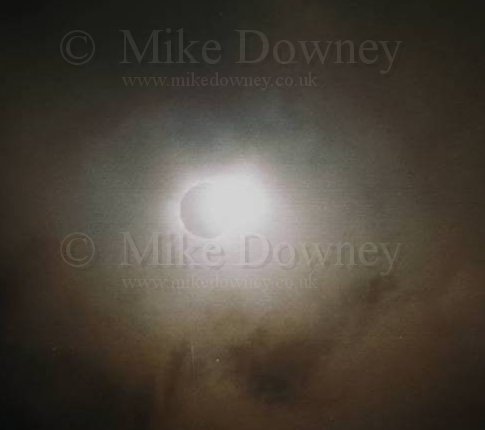On the morning of Wednesday 11th August 1999, there was a total solar eclipse visible from Cornwall, south Devon, and across parts of Europe. I was luck enough to be staying on the Lizard Peninsular, in the far south of Cornwall.
After a whole week of clear skies, the morning of the eclipse started cloudy. It remained that way , but about two minutes before totality, a small gap appeared in the clouds just in the right place for the sun to shine through. I got a glimpse of a thin crescent of the sun for a few seconds before the clouds rolled over again. By this time, it had started to go dark, and get slightly colder than before. The start of totality was obscured by clouds, but about 1 minute in, the clouds drifted away again, allowing us to see the eclipsed sun.

Totality only lasted for two minutes, so that was half of the eclipse lost due to cloud. The rest of the eclipse stayed clear, and I stood next to my camera, just pressing the shutter, then altering the exposure and taking another photo.
All of the photographs were taken using a Nikon FM, fitted with a Vivitar 75-205mm zoom lens, at the 205mm end. The film was Kodak Gold 100, and the exposures ranged from 1/500 to 1/4 s at f/8. For the minute where the eclipse was visible, I took a range of photographs with the range of shutter speeds mentioned above. The photo above was from the middle of the range - everything happened too quickly for me to actually make a note of the exposure used.
Unfortunately, although there was a gap in the clouds which the eclipse was shining through, there was also a thin layer of cloud lying in front which meant that the longer exposures picked up the cloud being lit up, rather than the solar corona. This also led to Baily's Beads and the Diamond Ring effect to be slightly obscured.

The picture above was an attempt to photograph the Diamond Ring effect. The exposure was about 1/500 to 1/2000s, but the sunlight shining around the disk of the moon has also lit up the clouds.
